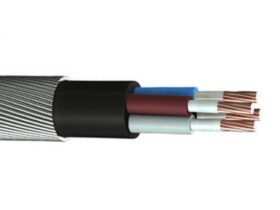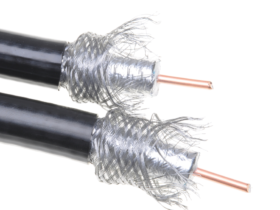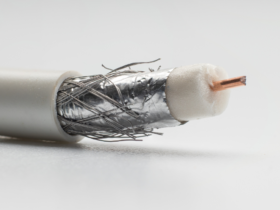Coaxial cables have played a significant role in the development of radio communication. It will not be an exaggeration to say that radio communication would never have been developed, without the invention of such cables. The use of such cables extends to applications, in which a signal must have minimum distortion and attenuation, or where elimination of external interference plays a critical part. There are many suppliers of such cables in India and abroad. There are many kinds of coaxial cables, including digital cables, industrial braided cables, fiber optic cables, twisted pair cables, and twin satellite wires.
Uses of Coaxial Cable
These Coaxial cables help address many problems that are an issue in bifilarly wires. These are constructed, using twin conductors, separated by the dielectric, thereby preventing external interference as well as the loss of electromagnetic signal. Different types of cables are determined by the materials employed (conductors and dielectrics) to craft them, the outer diameter, the characteristic impedance, the capacitance, the attenuation, and the frequency range.
Properties of Coaxial Cable
Characteristic impedance refers to the relationship between voltage and current in a cable of supposedly infinite length. The impedance of a coaxial line depends only on the type of dielectric used. Capacitance is the property of a coaxial cable, with which it stores electric charge, when a difference in potential energy exists between the two conductors. Attenuation is the sum of losses in the conductor and the dielectric, which determine the exponential loss occurring to a signal, during a transmission in a cable. It is an important discriminating factor in the choice of a coaxial cable.
There are many categories of such cables, but the most prominent ones are the five listed below. These cables are usually characterized, on the basis of the technical differences between them.
- Rigid, semi-rigid, hand-formable cables, for example, UT 085, SM141,Multiflex etc.
- Flexible cables with Teflon dielectric, for example, RG 316, RG 142, RG 179 etc.
- Flexible cables with polyetylene dielectric, for example, RG58 etc.
- Cables with foam dielectric, for example, Cellflex series, RT5020 etc.
- Super-flexible cables for laboratory purposes, for example, Sucoflex series etc.
Each of the above categories has its advantages and limitations, based on the purpose each is employed for. The rigid and semi-rigid kinds of cables are useful for internal RF and microwave wirings, but cannot be used in a laboratory, while the flexible Teflon cables are good for laboratory use.












Leave a Reply